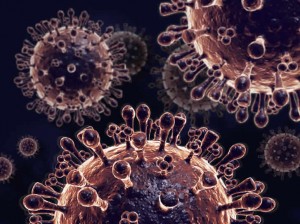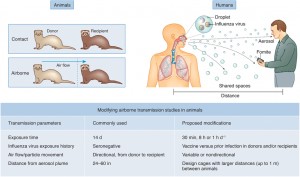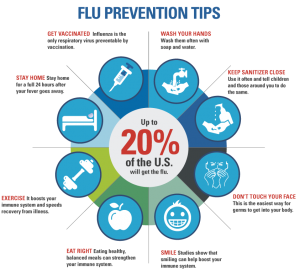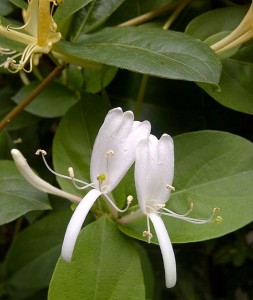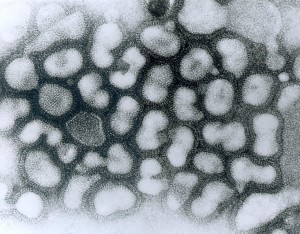
The flu vaccine being administered. Source: Flickr
With the flu season just around the corner, I’ve seen the flu shot being offered at many pharmacies and medical clinics in Vancouver. But have you ever wondered why people need to get the flu shot every year, rather than just once in their lifetime? Or why it seems like it’s such a big deal to get the flu shot, even for healthy people?
The flu is caused by a virus called influenza and is spread spread via airborne transmission or by fomite transmission, which is transmission from contact with an infected surface, such as a door handle (ew!) When the influenza virus particles get into our lungs, they can bind to cells in the respiratory tract and start replicating inside our cells!
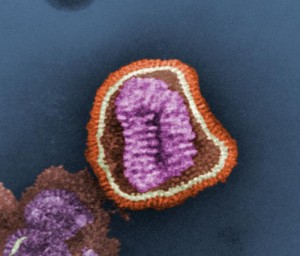
Influenza virus particle. Source: Flickr
Influenza is a RNA virus which simply means the genomic material of the virus is RNA. This may seem strange as the genomic information of life is captured in DNA! A very common characteristic of RNA viruses is their ability to evolve quickly. Influenza has two important proteins called hemagglutinin (HA) and neuraminidase (NA), which show up as spikes on the outer surface of the virus particle and can be detected by our immune system. Because of this, influenza is constantly evolving, especially at the genes which encode the HA and NA proteins so that our immune system won’t be able to recognize them! This evolution is called antigenic drift, which occurs annually and is the reason why people have to get the flu shot every year.
The components of the flu shots are based off predictions of the antigenic drift of the influenza viruses in the upcoming flu season. These predictions are done approximately six months in advance, and it’s really neat that we’re able to do this! The downside however, is that sometimes the predictions are a bit off. According to Dr. Jennifer Gardy, an epidemiology expert at the BC Centre for Disease Control (CDC), if you see a lot of ads promoting hand washing and other good hygiene during the flu season, it means that the predictions were off and that the vaccine won’t be as effective as intended!
Symptoms of the flu usually include fever, chills, congestion and feeling tired, and generally speaking, healthy people recover in about a week or so. These symptoms are actually a side effect of the immune response our body generates when it detects the infection.
However, the flu is more dangerous to people with weakened immune systems, like seniors, infants, or people who are sick or generally unhealthy. According to Statistics Canada, influenza and pneumonia was the 8th most common cause of death in Canada in 2008, with 5,386 deaths.
So why are we not focusing on vaccinating those with weakened immune systems? The reason why the flu shot has been made to be either free or at a fairly low cost to the general population is because it actually is beneficial to vaccinate the general population. But it’s not only so that these people won’t get the flu! If the general population is vaccinated against the flu, it will be more unlikely that the flu will be passed on to others who are most susceptible to it, like the elderly, sick, pregnant, or infantile. This is known as herd immunity.
Getting the flu shot serves not only to protect yourself against the flu, but to protect others as well: if you are resistant to the flu, then you can’t really pass it to someone else!
(By the way, UBC offers free flu vaccinations for students, staff, and faculty.)
Here is a video with more information about the flu vaccine:

Source: Rob Nelson Films

